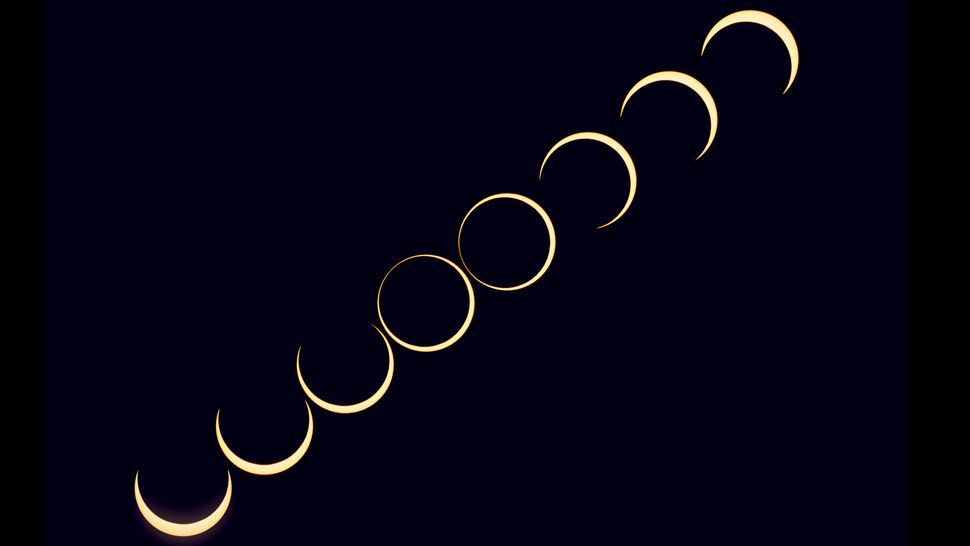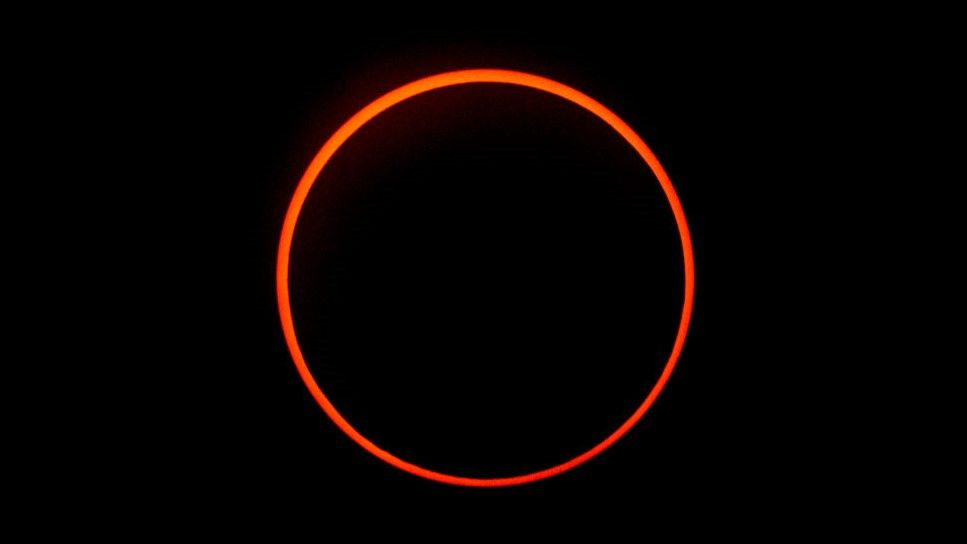1 month until the annular solar eclipse 2024: Here's what you need to know
By Daisy Dobrijevic
published 16 hours ago
On Oct. 2, the moon will turn the sun into an impressive "ring of fire."

series of phases of the annular solar eclipse in 2023. A composite that records the sequence around mid-eclipse of the October 14, 2023 annular eclipse of the Sun. At this eclipse the Moon was near apogee so its disk was not large enough to completely cover the Sun's photosphere and create a total eclipse
Phases of an annular solar eclipse. (Image credit: Alan Dyer/Stocktrek Images via Getty Images)
There's just one month to go until the annular solar eclipse 2024 is visible over parts of the Pacific Ocean, southern Chile and southern Argentina.
At 11:42 a.m. EDT (1542 GMT) on Oct. 2, the moon will begin to turn the sun into a dazzling "ring of fire" during the annular solar eclipse 2024. Maximum eclipse will occur at 2:45 p.m. EDT (18:45 GMT).
The phenomenon will only be visible to those watching from within the path of annularity — a 165 to 206-mile (265 to 331-kilometer) wide route where the moon will cover up to about 93% of the sun's disk. According to Time and Date, approximately 175,000 people live within the path of annularity. Those outside the path of annularity will experience a partial solar eclipse where the moon appears to take a 'bite' out of the sun. For those wanting to watch everything unfold live online, we will host a livestream of the event on Space.com, the details of which will be announced closer to the time. You can keep up to date with all the action with our solar eclipse live blog.
All solar eclipses are caused by the new moon when it's positioned precisely between Earth and the sun so that it casts a shadow on Earth. During a total solar eclipse, the moon is close enough to Earth so that its apparent size is equal to, or bigger than, the sun. It therefore completely blocks the solar disk, plunging observers into a brief moment of darkness.
. . .

The "ring of fire" effect during the annular solar eclipse is seen from Penonome, Panama, on October 14, 2023. (Image credit: LUIS ACOSTA/AFP via Getty Image
More:
https://www.space.com/annular-solar-eclipse-2024-one-month-away

